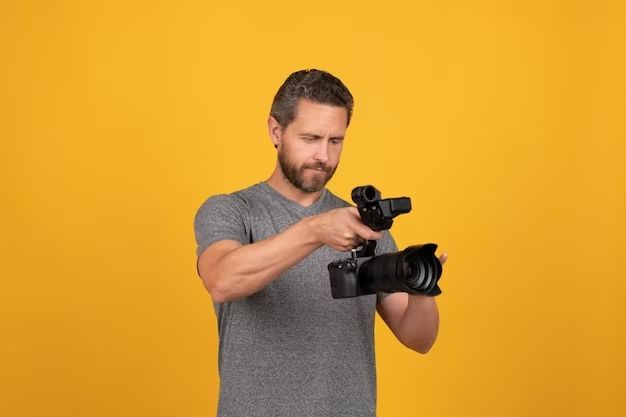Unleashing Your Photography Potential: The Advantages of Shooting in RAW Format

As a photographer, you may have heard about shooting in RAW format, but are you aware of the benefits it offers? Shooting in RAW format allows you to capture and preserve more information from your camera's sensor, which can result in higher-quality images with more editing potential.
In this blog, we'll explore some of the benefits of shooting in RAW format.

- More Detail and Dynamic Range
When you shoot in RAW format, your camera captures all the information that its sensor can detect. This means that you get more detail and dynamic range in your images, which can make a significant difference in the quality of your final product. With RAW files, you can recover details that might have been lost in JPEG compression, and you can also adjust the exposure and white balance without sacrificing image quality.
Since RAW files are not compressed like JPEGs, they offer better image quality. When you shoot in JPEG format, your camera compresses the image to reduce the file size, and this process can result in a loss of image quality. In contrast, RAW files retain all the original data captured by the camera, giving you the best possible image quality.
3. Greater Editing Flexibility
RAW files give you more flexibility when it comes to editing your images. You can adjust the exposure, white balance, and color saturation without losing quality. Additionally, RAW files allow you to recover details that might have been lost in the original capture. This means that you can correct underexposed or overexposed images without sacrificing quality.
4. Non-Destructive Editing
When you edit a RAW file, the changes you make are non-destructive. This means that the original file remains intact, and you can always go back to it if you need to. In contrast, when you edit a JPEG file, the changes you make are permanent, and you cannot recover any data that has been lost.
RAW files yield higher-quality prints than JPEGs. Since RAW files retain all the original data, they can produce larger prints without losing quality. Additionally, RAW files offer greater color depth, which means that you can produce prints with richer colors and more detail.
Final Thoughts
Shooting in RAW format may take up more space on your memory card, but the benefits it offers are worth it. With RAW files, you can capture more detail, preserve more dynamic range, and produce higher-quality prints. Additionally, RAW files give you greater editing flexibility and the changes you make are non-destructive. If you want to take your photography to the next level, shooting in RAW format is the way to go.
FAQs
What is RAW format in photography?
RAW format is an uncompressed and unprocessed file type that captures all the data recorded by the camera's sensor, providing photographers with greater control over the editing process.
Why should I shoot in RAW format?
Shooting in RAW format preserves the maximum amount of image data, allowing for more flexibility in post-processing and enhancing the overall image quality.
Does shooting in RAW improve image quality?
Yes, shooting in RAW format preserves more image data, resulting in improved image quality, especially in terms of dynamic range, color accuracy, and detail retention.
Is shooting in RAW more challenging than shooting in JPEG?
Shooting in RAW requires additional post-processing work compared to JPEG, but it offers greater control and the ability to correct exposure, white balance, and other settings without compromising image quality.
Can I convert RAW files to JPEG later?
Yes, RAW files can be converted to JPEG or other formats using software, giving you the flexibility to choose the desired file format during the editing process
Does shooting in RAW require special software? RAW files require specific software that supports RAW image processing, such as Adobe Photoshop, Lightroom, or other dedicated RAW converters.
Does shooting in RAW slow down the camera? Shooting in RAW may slightly increase the time it takes to process and save each image, but modern cameras generally handle RAW shooting efficiently without significant performance issues.
How much storage space do RAW files require?
RAW files are larger in size compared to JPEG files due to their uncompressed nature. The exact file size varies based on the camera and settings, but it's recommended to have ample storage capacity for RAW files.
Can I shoot in RAW and JPEG simultaneously?
Many cameras offer the option to shoot in both RAW and JPEG simultaneously, allowing you to have the flexibility of RAW files for editing and the convenience of ready-to-use JPEG files.
Are there any downsides to shooting in RAW format?
The main downside of shooting in RAW is the larger file size, which requires more storage space. Additionally, RAW files may require more post-processing time and knowledge compared to JPEG files.
Remember to present the questions in a visually distinguishable manner, such as using bold or italics, to highlight them within the blog post.

